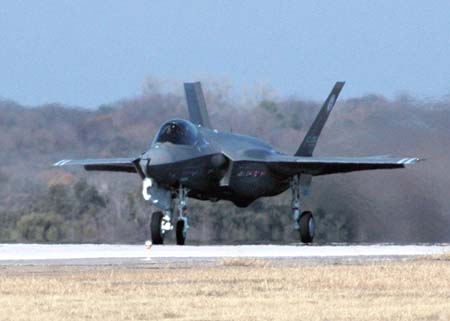The  great engine debate received a breath of new life this week when testing failed on the F135 engine destined to power the second F-35 Joint Strike Fighter test aircraft. As the Star-Telegram reports, this is the second time F-135-maker Pratt & Whitney has experienced a cracked turbine blade in the F135. Rep. Neil Abercrombie (D-Hawaii) gave the bad news to Defense Secretary Robert Gates and Joint Chiefs Chairman Adm. Michael Mullen during the Feb. 6 House Armed Services Committee hearing on the defense budget. The Administration, once again, has provided no money in its new budget for a second JSF engine and that has many lawmakers in a stew. The GE Rolls-Royce team received a long-term contract in 2005 to develop the F136 as an alternate and competitive engine, and every year since 2006 when the Pentagon first tried to quash the program, Congress has added funding to sustain it. Senior Air Force officials have acknowledged that the issue is purely economic, but they and Defense officials maintain there is little risk because of technological advances. In light of this recent test failure, which company officials say could delay the JSF testing schedule up to 30 days or more, Abercrombie asked, “If you have only one source for procurement, if that doesn’t work, then where are you?” He added, “The second failure, I think, speaks to the policy question of funding a competitive engine program,” eliciting a promise from Gates that he would “certainly take a look at it.” However, in response to another question about the alternate engine, Mullen replied that test failures of this nature are “certainly not unusual for new development programs.” And, he repeated the oft-stated Pentagon position: “We looked at the business case on this over several years and the investment in the second engine was upwards of $2 billion, and we couldn’t get it to pay off, basically.”
great engine debate received a breath of new life this week when testing failed on the F135 engine destined to power the second F-35 Joint Strike Fighter test aircraft. As the Star-Telegram reports, this is the second time F-135-maker Pratt & Whitney has experienced a cracked turbine blade in the F135. Rep. Neil Abercrombie (D-Hawaii) gave the bad news to Defense Secretary Robert Gates and Joint Chiefs Chairman Adm. Michael Mullen during the Feb. 6 House Armed Services Committee hearing on the defense budget. The Administration, once again, has provided no money in its new budget for a second JSF engine and that has many lawmakers in a stew. The GE Rolls-Royce team received a long-term contract in 2005 to develop the F136 as an alternate and competitive engine, and every year since 2006 when the Pentagon first tried to quash the program, Congress has added funding to sustain it. Senior Air Force officials have acknowledged that the issue is purely economic, but they and Defense officials maintain there is little risk because of technological advances. In light of this recent test failure, which company officials say could delay the JSF testing schedule up to 30 days or more, Abercrombie asked, “If you have only one source for procurement, if that doesn’t work, then where are you?” He added, “The second failure, I think, speaks to the policy question of funding a competitive engine program,” eliciting a promise from Gates that he would “certainly take a look at it.” However, in response to another question about the alternate engine, Mullen replied that test failures of this nature are “certainly not unusual for new development programs.” And, he repeated the oft-stated Pentagon position: “We looked at the business case on this over several years and the investment in the second engine was upwards of $2 billion, and we couldn’t get it to pay off, basically.”
The U.S. military is maintaining a beefed-up presence in the Middle East, including fighters and air defense assets, following the U.S. strikes on Iranian nuclear facilities June 22 and subsequent retaliation by the Iranians against Al Udeid Air Base in Qatar.
